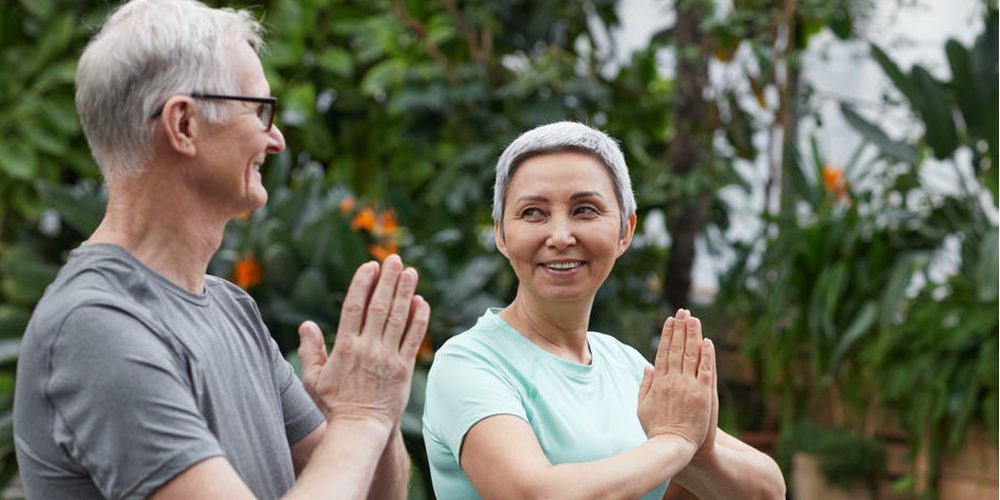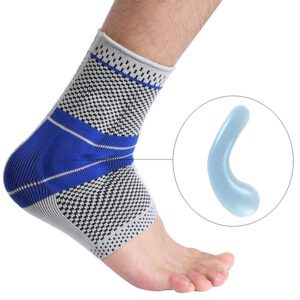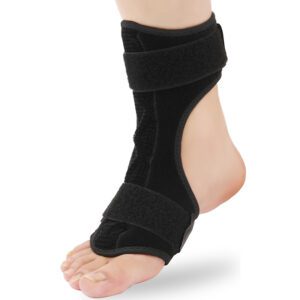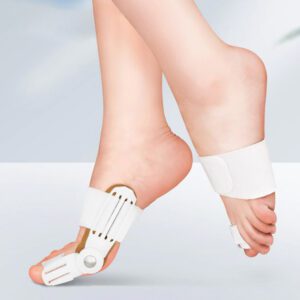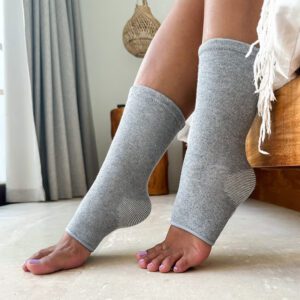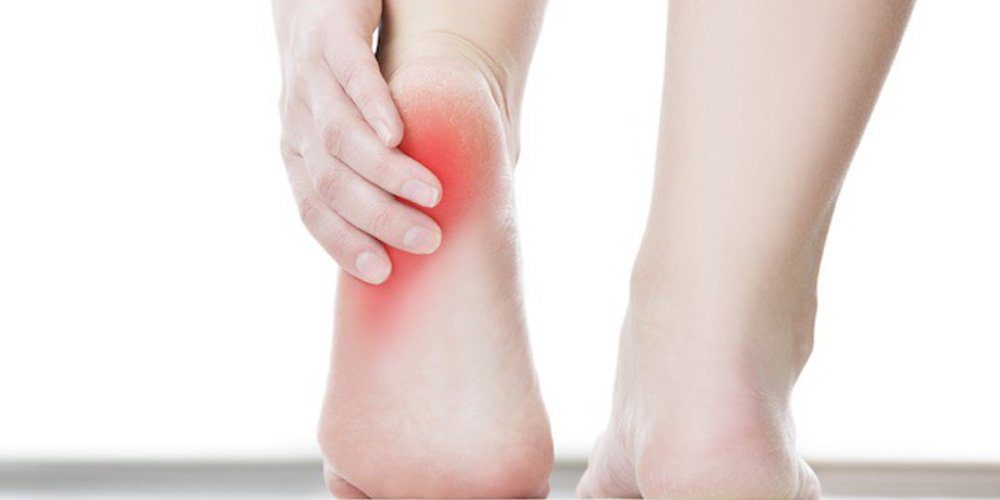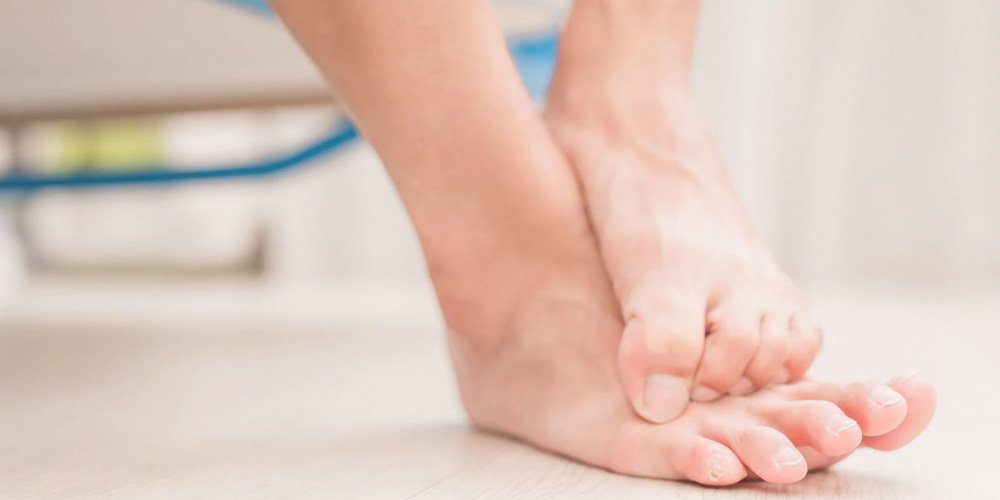Inactivity is one of the major risks to health in seniors, second only to smoking. It can lead to obesity, disability and chronic illness. Fortunately, exercise is key in maintaining a healthy lifestyle as well as promoting independence in seniors and increasing their social interactions with others.
Exercise can be good for your brain and emotional state as well as your body. Whether you’re looking to maintain your current weight or to feel more energetic and healthy overall, these are a few of the things you can do to stay active when you’re over 50.
Benefits of an active lifestyle – A few good reasons to stay active:
Turn back the clock. Living an active lifestyle can add years to your life, but it will add life to your years at the same time. The older you get, the more muscle mass you’ll lose. So exercising regularly is particularly important as you age to keep up your muscle mass, strength and endurance.

Increased energy levels and strength
Exercise can build muscle and bone mass when done right. And if you exercise regularly, you’ll certainly boost your cardiovascular healthy and increase your energy levels. You’ll feel stronger and active throughout the whole day. And doesn’t that sound sweet?
Prevent illnesses and diseases
It’s never too late to get started on a healthy lifestyle. Exercise can help you prevent diseases like cancer, heart disease and diabetes. And if you already have any of these illnesses, exercise will make it easier for you to manage them.
Regular exercise reduces the risk or delayed development of many different illnesses and diseases. It is THE most important thing to maintain under any circumstances. If you want to prevent or reduce the risk of heart disease, stroke, Alzheimer’s, Cancer, Osteoporosis, Arthritis or Cholesterol, getting active is by far the best thing you can do. If you already have problems with your feet, knees or back and if exercising is already hard to do, feel free to check out our shop. We have supports and little helpers for you to help you getting or stying as active as you probably can throughout your life.
Minimise the symptoms of chronic conditions
Menopause Symptoms, Joint pain, gain of weight or lowered immune functions are only a few of the symptoms of chronic illnesses associated with ageing. Exercise can help to minimize these symptoms and make life more comfortable for people suffering from chronic conditions.
Stay independent
Exercise can help seniors stay independent by keeping their minds sharp, muscles strong and balance so that you can avoid falls, health problems and nursing home placement. Healthy living is a great way to eliminate some of the effects of ‘senior moments’ such as short term memory loss. Staying active will also keep you from becoming isolated – it’s something you should do for yourself but if possible, try to involve other family members in your physical activities as well so they benefit from it as well.
If you’re physically fit, you can stay mobile and independent for longer. And that means that you can live your life longer the way you want it to be. We all want to stay in our own environment as long as we can and be independent and self-reliant. And by staying active, your chances will dramatically improve.
Quality of life
With a reduced risk of diseases, fewer chronic conditions and a stronger and healthier body and mind you’ll be more independent, live longer and have fun on top of that. Who wouldn’t want something like that?
You will enjoy more of your life and look forward to every day you’re alive. Being active keeps your mood positive and upbeat, reduces stress levels and helps to boost your energy levels. So go out there, get some exercise in and feel the difference. Enjoy yourself and live life to the fullest. Simply because you only have one.
Boost brain and emotional health
Being active raises the level of endorphins in your body, reduces stress and enhances your cardiovascular system. As a result, you’ll feel more focused and relaxed, have more energy and can think much clearer.
Exercise is so much better than any medicine when it comes to boosting your mood. And if you like the way you feel afterwards, there’s nothing stopping you from making it part of your daily routine. Being active has shown to slow down the process of mental decline in people with mild cognitive impairment which has been linked to Alzheimer’s disease. It can also help you fight depression, reduce anxiety and improve your sleep.
Improve quality of sleep
Poor sleep is more than a nuisance. Not only are you less productive during the day, it can also have long term health effects like memory and concentration problems.
Exercise can help you fall asleep faster (if you do it before going to bed) or increase the quality of your sleep by helping your body recover from fatigue as well as reducing stress levels that might disturb your slumber.
Maintain a healthy weight range
You’re more likely to reach and maintain an ideal weight when you exercise – instead of trying yo starve yourself, why not try exercising? It could prevent abdominal obesity (excessive fat tissue build up around the waist), which may cause serious health problems such as cardiovascular disease (which is related to stroke, heart attack and heart failure) or even type 2 diabetes . And if you think that being overweight isn’t dangerous enough a recent study has shown that obesity and sedentary lifestyle may increase the risk of Alzheimer’s disease.
Exercise will also keep your heart strong and healthy, which is necessary for a long life. A stronger cardiovascular system helps you to move more easily and increases your blood flow by distributing oxygen throughout your body. Your stamina will be boosted too, which means that you don’t get as tired as quickly during any physical activity.
Areas specifically affected by age deteriorate naturally over time: the elasticity in our skin reduces, muscles weaken, our ponders start to sag etcetera. But there’s so much more we can do than just accepting these changes with age. Exercising regularly will help prevent some of these changes from occurring at the same speed and to the same degrees.
To sum it up: Exercise often, eat healthy, be happy! You’ll live a longer, healthier life if you do.
How can I stay active in my 50s? – Tips for exercising in your 50s and beyond
Nowadays, more and more people are starting to take health and fitness seriously in their 50s. The truth is that when you stay active in your 50s it not only helps you maintain a healthy weight, but also reduces chronic conditions and the risk of diseases. Exercising also boosts your brain and emotional health. Exercise is great for mental clarity, as well as maintaining a healthy mood. It can even help you prevent some of the natural age-related changes (like slowing down cognitive decline). So how do you get started with staying active in your 50s? Here are some tips:
Staying sociable
There’s no need to spend hours at the gym: exercising with other people is a lot more fun. In a study of participants who were taking part in group-based exercise classes, it was found that they performed much better than those who worked out alone. There are many different types of classes you can take like yoga or Pilates, which will teach you a new skill whilst working out your body and mind.
If you don’t feel ready to join one yet, set up some dates with friends for any sporty activity . It could be as simple as going for a walk together. And if you’re not really sure what kind of exercises would suit you best, opt for something gentle such as yoga or swimming – these ones don’t require any previous experience.
Playing games is a great way to stimulate your brain and sty in contact with your friends. But if you’re not into games, social engagement through a club or charity association can help with feelings of loneliness. And it is extremely beneficial for those already receiving dementia care or Alzheimer’s care.
Keeping up with household chores
The most simplest way to remain active is keeping up with tasks in and around your house, apartment or community garden. It’s easy to push these tasks off, but doing them can be fun. And it’ll keep you in good shape: dusting and vacuuming requires a lot of movement, which keeps your body active and flexible. This helps with many important functions like digestion and circulation.
Getting a dog
If you are interested in pet care, consider adopting an aging dog or even fostering one. There are many dogs that end up at the animal shelter because their owners pass on or find themselves unable to take care of them any longer. Some people even decide to surrender their pets without having another one to replace it yet – this is how older dogs come into existence. They’re looking for someone who will love them as much as they are loved now.
Getting an older dog is actually a great way to stay active. An animal companion requires much attention and care, which in return boosts your energy levels. Playing or exercising with them will help get your blood pumping as well as keeping you fit on two fronts: physical and emotional.
Dog owners also report that owning a pet can reduce the feeling of loneliness for some people. It may sound strange, but it’s true: no-one is truly self-sufficient, we all need someone else to share our experiences with. And dogs are known to be very affectionate towards their family members – there’s no denying they can make you feel loved if you’re willing to love them back equally.
Keep a regular routine
Make time for your daily exercises by scheduling them in your calendar. It’s one of the best ways to ensure you get your workouts done, because working out will hold a fixed place on your schedule every day. Also, staying active is easier if you’re doing it with friends and family members. You’ll encourage each other to push harder and do even more as well as sharing opinions about new workout equipment or any resources (like fitness apps).
Make it well-rounded
Including a variety of exercises in your workout can keep it interesting and more fun. You should try out different types of workouts – whether you’re going to the gym or staying at home, plan them ahead. There are lots of ways to stay active without even stepping outside your house: using an elliptical machine can help you improve on many parts of your body, while swimming is a low-impact activity that provides cardiovascular benefits.
There are various aerobic activities that you can enjoy, such as walking, swimming, jogging, dancing or cycling. Combine strength training into your routine to build or retain some muscle density. You don’t need to push heavy weight, doing Pilates or Yoga is just as fine. Incorporate stretching to build or enhance joint flexibility and mobility and you’ll have a good workout plan.
Keep it varied
We all know that consistency is one of the keys to success, but not so many people actually follow it. Don’t give up because you can’t go on for another minute or aren’t making enough progress. By changing your routine, you’ll keep your workouts more interesting. If you’re a swimmer, try out some cardio-kickboxing classes as well. If you’re into yoga, take a two-week course in weightlifting. This will help you stay active and also prevent your body from getting used to only doing one type of exercise all the time.
Take it easy at the start
If you’re just starting out, avoid pushing yourself too hard. This will help you build up a tolerance to exercise gradually. You don’t want to get injured because of overexertion or pushing your body too fast. Think about it – no matter how good the workout plan is, if you injure yourself every week, there’s not much benefit in continuing with it.
Make sure to warm up properly before exercises and stretch afterwards as well. If you’re doing any type of cardiovascular activity, keep in mind that your goal isn’t just doing whatever exercise for a set number of minutes – aim at maximizing the output while still keeping the intensity low enough that you don’t strain yourself. You can always increase things later on once your body adapts.
Always start slow in your daily exercise routine, building up the intensity of your workout slowly and gradually. Don’t rush into working out – when you suddenly stop being active for a while and then try to catch up by doing twice as much or more than you were used to, it can harm your body. It’s not just about warming up before exercising; the whole point is actually giving yourself enough time to adapt to various stresses that come with increased activity levels.
Challenge yourself
If you’re bored with going to the gym or doing your usual routine, try something new. There are many types of workouts that offer similar benefits and can be done at home – grab a kettlebell and take up gymnastic training. When you find out it’s not for you, there are plenty of other options. You don’t want to get stuck doing an activity long-term because of a bad experience with it in the beginning.
Set some goals to keep up a high motivation. You should aim at improving upon your performance or pushing yourself a bit harder every day. It’s also important to reward yourself for sticking with your workout plan – one way of doing this is setting some type of achievement-related goal and working towards it in baby steps.
Stay alert to problems
Overworking yourself is one of the worst things that you can do to your body – it can lead to various types of injuries. If something hurts, rest and take a break. When people over-exert themselves, they usually try to push through the pain because they’re too stubborn or have set their mind on completing certain tasks regardless of whether their body is up for it or not. It’s better to quit an activity than risk injuring yourself in the process.
Make sure you know your own limits before starting any type of exercise routine – this way, you won’t get injured as easily and will be able to enjoy working out more since you’ll know how long you can go without getting tired or sore.
Track your heart rate
When doing cardio exercises – if you can’t talk in full sentences, you need to slow down. Depending on your age and fitness level, your maximum heart rate will vary – for most people it’s between 150 and 190 beats per minute. Once you hit that, you need to stop or slow down gradually while taking breaks. Your heart is a muscle too – if you overdo it when exercising, it can be damaged just like any other.
What foods should you avoid after 50?
This is especially important if you have diabetes – keep your blood sugar levels in check and try to avoid foods that are high on the glycemic index (GI) or which cause a spike in insulin.
When it comes to glucose metabolism, carbohydrates can be grouped into 2 categories: low-glycemic carbs and high-glycemic carbs. Low-GI/low-sugar foods include lentils, beans, carrots, apples etc. High-sugar/high GI foods tend to be processed carb products such as white bread, chips or pastries. Many processed food companies add sugar to boost the flavor while adding very little nutritional value… Well of course they do! Sugar is addictive and offers no real long term health benefits (for more on the negative effects of sugar, read this article on prevention.com ).
Low-GI foods also include whole grains such as brown rice or oats which are digested slowly and therefore prevent a sudden increase in blood glucose levels. They contain more fiber than processed foods which is another important reason why they’re better for your body and your digestive system.
The main culprit behind the increased risk of heart disease is inflammation – high GI foods tend to cause an exaggerated insulin response which can result in chronic inflammation throughout the body (more on this here ). The processing/refining of carbohydrates also removes most of their healthy nutrients, leaving you with nothing but empty calories. It’s much healthier to get your carbs from vegetables instead… “But veggies have so many carbs! They make you fat!” – this is a common myth… It’s the amount of calories that determines weight gain, it has nothing to do with where those calories come from.
Another tip: eat smaller meals throughout the day instead of 3 big ones. This will help to keep your blood sugar levels consistent and prevent sudden/sharp spikes in insulin production which can cause inflammation.
Pay attention to how your body feels after eating certain foods or drinking sugary beverages. If you feel tired or sluggish afterwards, there’s a good chance that the food was probably high on the GI index and loaded with refined sugars. Pay attention to what your body craves and always go for fresh produce over processed foods – these tend to be poorly balanced nutritionally.
Resolve to eat whole, natural foods as often as you can. Many of the ingredients in processed foods are derived from genetically modified organisms (GMO’s) which have been linked with inflammation and disease. Avoiding GMO’s goes hand-in-hand with cutting down on sugar and refined carbs too.
There is a wide array of healthful, natural foods that will help you to maintain a healthy weight without causing inflammation or putting your heart at risk. The best thing about them? They taste great! Here are some good meal options: quinoa, brown rice, beans, potatoes/sweet potatoes without the skin , tomatoes, broccoli, spinach etc. There are so many delicious food options out there – it just takes a few minutes to find recipes that you like.
Is it too late for older adults to do strength training?
It’s never too late. Studies have shown that when you start exercising regularly and doing strength training in particular, your body releases hormones which help to reduce inflammation and improve brain function.
Plenty of studies have shown that when individuals exercise on a regular basis they feel better mentally, improve their moods and sleep patterns (the best way to maintain energy levels is to get plenty of rest).
The more fit you are the easier it will be for you to maintain an active lifestyle as well. It’s never too late to start!
What exercises should seniors avoid?
Just because you’re over 50 doesn’t mean that you should be doing more gentle exercise. Research has shown that doing certain types of high impact or intense exercises can have negative effects on your joints (especially if the area is already inflamed).
If you have osteoarthritis, it’s best to avoid any exercises which may cause additional inflammation: aerobics, running etc. If you want to tone your muscles try yoga instead – a lot of people find yoga to be an addictive stress-reliever and can do wonders for improving posture and flexibility. Exercise in general will help with both flexibility and strength but make sure to listen to your body as well. You shouldn’t push yourself too hard when working out while over the age of 50, it’s better to work at a comfortable pace and be consistent.
If your joints are in pain, try swimming or biking instead – both of these exercises can help build muscles without putting extra stress on the joints.
The best thing you can do for your health as an over 50 is to listen to your body. If you’re constantly feeling tired or having trouble sleeping it may be a sign that something isn’t working right. With chronic inflammation being one of the biggest culprits behind poor energy levels and lack of sleep. Pay attention to what foods you crave or new exercise programs that seem great during the day but give you joint pain later in the evening – this will often times reveal underlying issues within the body that aren’t related to weight gain (such as inflammation).
What exercises are great for people over 50 and beyond?
Always start off with a warm up before you begin your actual workout routine. This will heat up the muscles, increase blood flow and get the body ready for exercise.
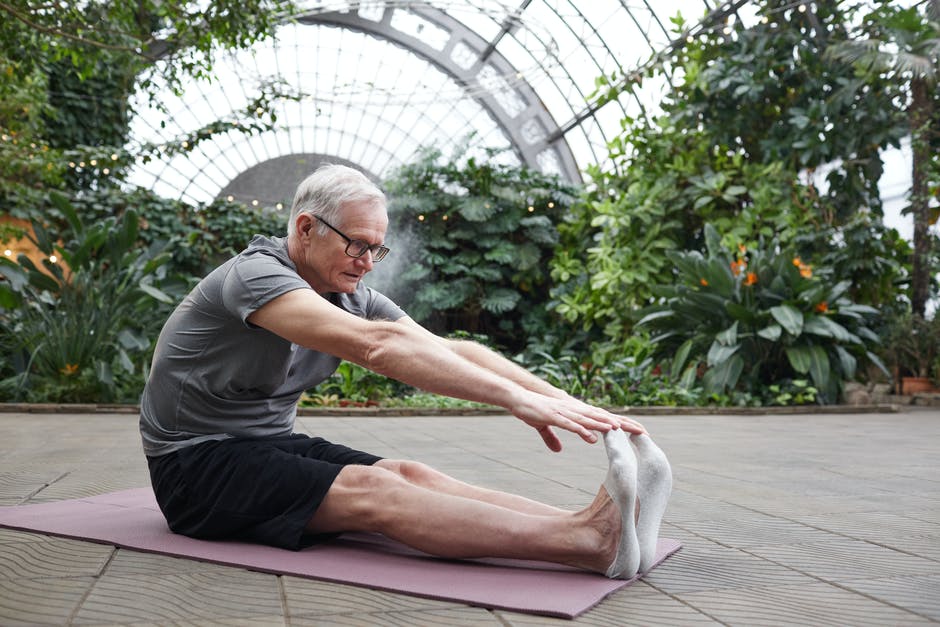
Stretching
Stretching is always a good idea – yoga is great for increasing flexibility, muscle repair and improving balance.
You can either start or end your workout with some stretching. Yoga is the ideal form of stretching because it’s gentle and will help you to relax.
Aerobic activity
Cardiovascular exercise is great for the body. It promotes better circulation, improves lung function and allows your heart to work more efficiently. You can do some aerobic activity early on in the day before you start any strength training. The best thing about it is that there are so many different ways to exercise aerobically: biking, jogging, swimming etc.
Daily Walking
Walking is not only a great way to increase energy levels but it’s also very inexpensive.
You can either walk after dinner or during your lunch break – just make sure that you’re doing at least 10,000 steps a day (it takes about 2 hours of walking).
Most adults over the age of 50 have no problems with this form of exercise as long as they don’t have joint pain or other issues with mobility.
Weight training
This type of exercise is essential for maintaining muscle mass and helping your body to burn more calories.
The best thing about weights is that they will help you to become more toned and fit – but you have to make sure not to overdo it! It’s important to listen to your body. If you’re starting a weight training program make sure you ease into it and don’t push yourself too hard, especially if you haven’t worked out in years (or ever!). Start off with a couple of weights at home before working up the courage to join a gym.
Swimming
Depending on your fitness level and what type of shape you’re in, swimming can be a great form of exercise. If you’ve never swam before or are over 50 it’s important to start off slowly with an instructor and work up from there.
If possible try swimming at least three times a week – this will help you to build lung strength which is essential for boosting energy levels. (Lung capacity tends to decrease as we age.) Swimming also helps with flexibility and tone.
Hit the dance floor
Dancing is all about movement – it’s a great way to keep your body in shape and your brain working. This type of exercise can also help to relieve stress while having fun as well!
When you’re getting ready to hit the dance floor make sure that you’re bringing along comfortable clothing. Also, don’t forget about a good pair of padded sneakers (or dancing shoes) so you won’t get blisters on those toes.
Seated exercises
If you don’t feel comfortable with some of the more traditional forms of exercise, there are a couple of seated exercises that can help to improve your energy levels.
Exercises such as yoga take advantage of movement without having to strain muscles and joints. Individuals who have joint pain or other mobility issues may find it easier to sit down during their workout.
How many days a week should seniors exercise?
Most people over 50 will benefit from an exercise program that involves two or three days of working out a week for about 30 minutes each time. The amount and type of physical activity should be tailored to each person’s individual needs and abilities.
Less is more with regard to exercise – whether you’re just starting out or not in the right shape, (no pun intended). You don’t want to overexert yourself when you’re exercising so as not to hurt your muscles or joints. If you are very aware of your body then you’ll know how much is too much before it’s too late!
How do you get older family members to stay active?
Although it is important to encourage your older family members to stay active, don’t push them too hard. There are a lot of exercise options for individuals who are over 50 and it’s best not to pressure them into doing something that they’re not ready for.
Even if you think they look like they could benefit from working out, remember that it takes time and effort for someone new to start exercising – convince him/her with lots of support in order to achieve the desired results! If you give up before you even try, nothing will change.
Some basic things that can help your family members get started include:
1. Make sure he/she has all the equipment (treadmills, weights etc.) necessary before getting started.
2. Let them know that you can be a personal trainer and will assist with whatever they need.
3. Set realistic goals together, such as “walking for 30 minutes, 3 days a week”. Ask him/her to commit to changing his/her lifestyle and then both of you have something to work toward! For example, rather than setting a goal of running a marathon by the end of the summer you can set short term goals with your family members such as going for an hour long walk every Saturday afternoon or doing exercise on one day out of the week (hopefully it’ll turn into two!). Before they know it they’ll be working out regularly!
Conclusion
In the end, maintaining an active lifestyle is important for all age groups. The tips in this blog post can help you to stay active throughout your 50s and beyond.
Share your story in the comments and help others by sharing your experiences and, successes and failures. Let’s live an active, healthy and happy life together.





